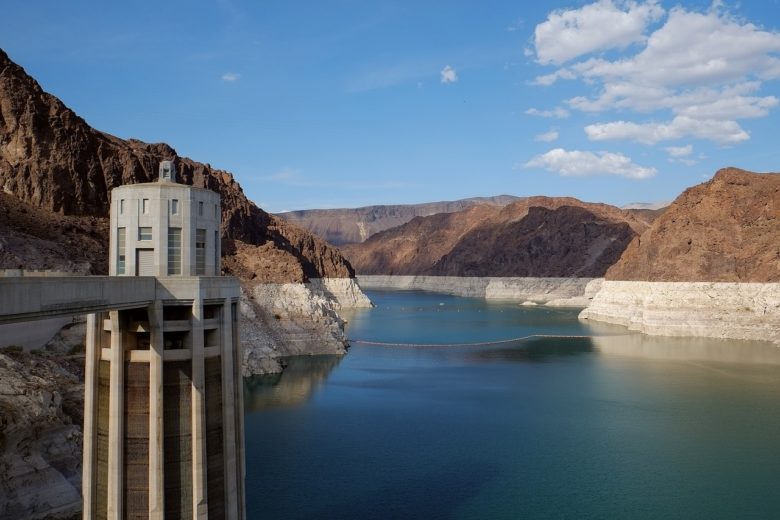
Advantages of Hydropower for Energy Generation
We are reader-supported. When you buy through links on our site, we may earn affiliate commission.
People are increasingly concerned about finding renewable energy sources to meet the world’s needs. They know that fossil fuels are no longer realistic to depend on, especially as we become more aware of the growing threats associated with climate change. The advantages of hydropower are unable to be ignored.
Hydropower is one method of energy generation that offers many benefits. This option involves capturing the energy generated by water moving downstream, and the water cycle as a whole. The volume of the flowing water and the change in elevation as water flows downward are two things that impact the energy generated by hydropower.
In some cases, the water’s movement powers a turbine at a hydropower plant. Systems also exist that store water and release it as needed to generate energy. In the United States, hydropower is the country’s largest single renewable energy source for electricity.
Here are some of the perks that hydropower offers:
It’s a Renewable Resource
Not surprisingly, one of the primary benefits that people often bring up about hydropower — sometimes called hydroelectric power — is that it is a renewable resource. That’s due to the never-ending water cycle mentioned above.
First, energy from the sun heats the water on the surface of the world’s lakes, oceans, rivers and other bodies of water. That effect turns the water into vapor from a solid or liquid state, depending on its original form. Then, the water vapor condenses into the clouds and eventually comes down again as rain or snow. The precipitation gathers into streams and rivers that empty into lakes and oceans.
Although this cycle continues around the world, the amount of precipitation an area typically experiences has a substantial effect on hydroelectric power generation. However, researchers have made progress in finding ideal sites. For example, researchers at Great Britain’s University of Leicester developed a big data system that pulls information from nearly 30 sources to determine the best rivers to choose for hydropower.
It Has a Smaller Carbon Footprint Than Other Options
The widely accepted conclusion is that hydropower’s carbon footprint is smaller than other energy generation techniques. However, until recently, scientists lacked a reliable way to measure the greenhouse gas emissions associated with dams used for hydropower. A team in Canada developed a couple of technologies they say can measure the methane and carbon dioxide emissions at hydropower sites.
One of the gadgets takes emissions measurements every three minutes and the other does the job three times an hour. The team started its research with the acknowledgment that Quebec, Canada, plans to open four new hydropower plants on the Romaine River. They intend for the collected data to provide more precise figures related to how hydropower’s carbon footprint compares to other options.
That level of specificity could increase funding for projects elsewhere. Iceland, Norway and Austria are among the countries already using hydropower and getting favorable results.
It’s Cost-Effective to Build Hydropower Plants
When planners determine which kinds of power plants to build, they typically consider both long-term and short-term needs. One such factor is the cost-effectiveness of a given option over the years.
Another thing that hydropower has going for it is that its power plants are less expensive to operate than other energy generation facilities. Maintenance and operating costs go down since there’s no fuel. Plus, the infrastructure can last at least 100 years.
Economic benefits can also stem from associated tourism. For example, Ireland’s Ardnacrusha Power Plant is open for tours in County Clare. That destination is a working facility, and it’s easy to envision the associated boosts to the economy.
For example, if school groups regularly visit and decide they’re hungry afterward, they could give business to nearby restaurants. Some establishments might directly try to attract tourists by offering discounts to people who visited the hydropower facility.
It’s Possible to Enhance Hydropower Plants as Technology Evolves
Professionals also need to be mindful of keeping the plants updated as scientists come up with better alternatives. General Electric is one of the companies doing this with many of its hydropower facilities. One retrofitting project in Switzerland replaced conventional turbines with variable-speed models.
The new equipment allows operators to tweak the amount of energy used or returned to the grid. This approach also gives hydropower plant representatives more control over the amount of stored hydropower energy. Then, they can better compensate for fluctuations in the grid.
These upgrades are not cheap or quick. However, they demonstrate the payoffs that can happen once companies improve hydropower plants and equip them for future needs.
Hydropower Is Not Without Faults
Although we’ve looked at the benefits of hydropower for generating energy here, it’s important to conclude that hydropower is not a perfect solution. For example, hydropower dams can significantly impact the natural habitats around them, including fish migration. If hydroelectric power equipment changes the water’s temperature and flow, the effects could impact both humans and wildlife in the area.
These downsides do not mean that people should disregard the positive qualities of hydropower. But they remind each of us why it’s crucial to research both the pros and cons before getting fully on board with something.
Share on
Like what you read? Join other Environment.co readers!
Get the latest updates on our planet by subscribing to the Environment.co newsletter!
About the author
Jane Marsh
Starting from an early age, Jane Marsh loved all animals and became a budding environmentalist. Now, Jane works as the Editor-in-Chief of Environment.co where she covers topics related to climate policy, renewable energy, the food industry, and more.





